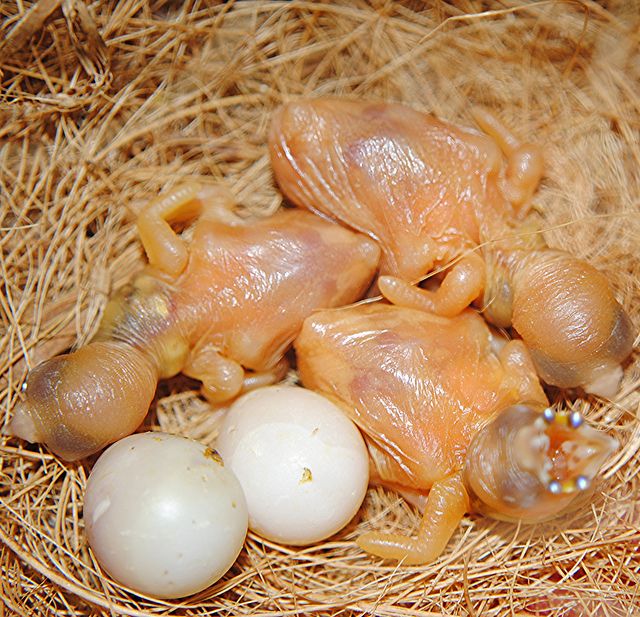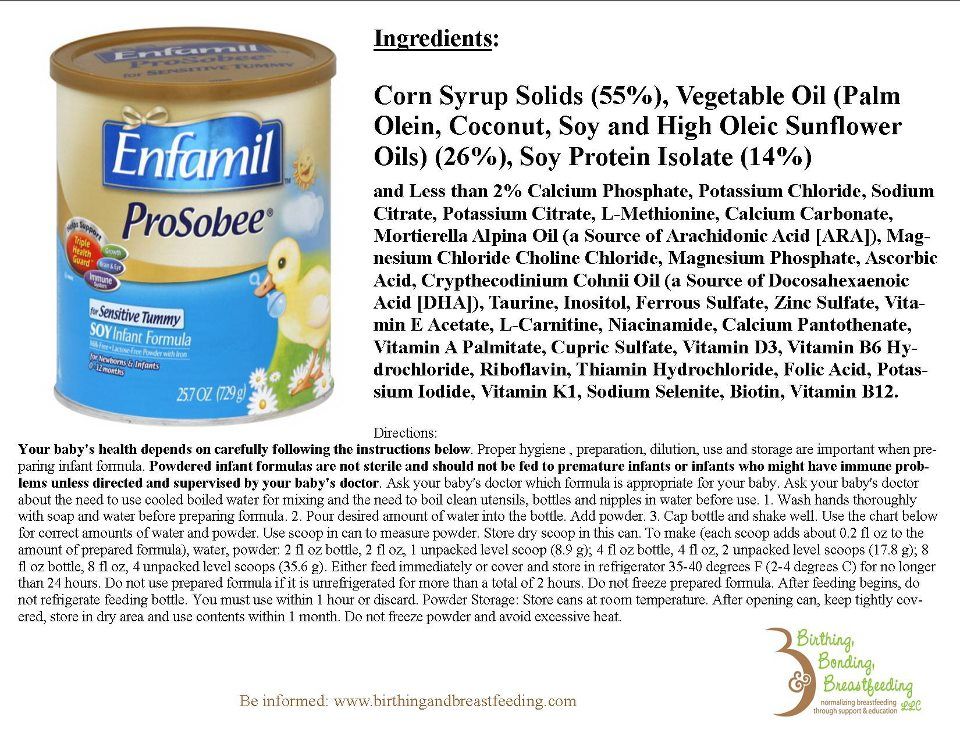Is baby food gluten free
Does Baby Formula Contain Gluten?
If you have a family history of gluten intolerance or celiac disease, the infant formula you choose and the possibility that it contains gluten will be at the forefront of your research for the perfect nutrition.
Most baby formulas do not contain gluten. In fact, if you look at the product label of most infant formulas, you won’t see gluten ingredients listed.
However, there is always a possibility of cross-contamination if the label does not specifically state “gluten-free,” so keep this in mind when you start reading labels.
European Baby Formula Stages
As your baby grows they will be ready to switch between European baby formula stages or develop a need for another type of European formula all together. After 6 months, many families will also introduce solid food to your little one’s diet.
At this time, gluten is introduced in some of the new baby foods. It is best to introduce one new food or formula at a time, and wait several days between introducing anything new to the baby's diet.
Switching formulas and switching foods at the same time can cause confusion as to which food/product might cause an adverse reaction. Taking caution allows you to pinpoint any adverse reactions quickly and be precise about what caused the response in your baby.
Gluten Free Baby Formula
#1 Gluten Free Goat Milk Formula
Kendamil Goat's Milk Formula
Age: 0-6 months
Size: 800g / 28.22oz
Why Choose?
A2 Whole Goat Milk, No Palm Oil, No Fish Oil, Vegetarian Friendly, HMO's
Check Pricing
#1 Gluten Free Cow Milk Formula
Kendamil Stage 1
Age: 0-6 months
Size: 800g / 28.22oz
Why Choose?
Whole Milk option with MGFM, DHA/ARA from Algae Oil instead of Fish Oil, No Palm Oil
Check Pricing
What Ingredients are Gluten?
Gluten is a general name for the proteins found in wheat (wheat berries, durum, emmer, semolina, spelt, farina, farro, graham, and einkorn), rye, barley and triticale – a cross between wheat and rye.
Gluten helps foods maintain their shape, acting as a glue that holds food together. Gluten free foods use substitutes like corn starch, xanthan gum, or guar gum to produce similar results of binding the foods together.
Grains, starches or flours that can be part of a gluten-free diet include:
- Amaranth
- Arrowroot
- Buckwheat
- Corn — cornmeal, grits and polenta labeled gluten-free
- Flax
- Gluten-free flours — rice, soy, corn, potato and bean flours
- Hominy (corn)
- Millet
- Quinoa
- Rice, including wild rice
- Sorghum
- Soy
- Tapioca (cassava root)
- Teff
Gluten Allergy in Babies
For many parents reading about issues with gluten, the question of whether your baby has an allergy to gluten or a sensitivity is important.
To help you out, think of a gluten allergy as a wheat allergy, as this is the predominant cause of the allergic reactions. It will be difficult to know if your baby has a wheat allergy until you start feeding your baby foods.
It will be difficult to know if your baby has a wheat allergy until you start feeding your baby foods.
There is some speculation that breastfed babies may experience wheat allergy symptoms sooner from the mother’s breast milk, but no scientific evidence supports this.
Usually you can have an allergy test for babies to identify if your baby has a true wheat allergy. The issue with these allergy tests is that they are not the most accurate this early on, and they may pick up other potential allergies that aren’t exact.
It is recommended to repeat allergy testing at 18 months to ensure the accuracy of the earlier test results. You might wonder, why take the test at all if it isn’t accurate? The allergy test for babies at least helps a parent narrow down what is causing problems in their baby and provides data to make decisions from in the future.
Gluten Allergy Symptoms in Babies
As much as 6 percent of the population may have a non-celiac gluten sensitivity. When this happens it is beneficial to have a low or gluten-free diet.
When this happens it is beneficial to have a low or gluten-free diet.
By cutting or severely limiting gluten to little ones when there is a sensitivity, babies feel better in a short amount of time.
Celiac Disease in Babies
For about 1% of the babies in the United States, when gluten is consumed, it triggers an autoimmune response that can be severe and have effects that last a lifetime.
Some of the long term symptoms can range from severe psoriasis to thyroid dysfunctions and even lead to bigger health problems such as lymphoma and osteoporosis.
Celiac Disease Symptoms in Babies
Symptoms of celiac disease in infants include:
- Failure to thrive, including a failure to gain weight or even weight loss
- Swollen stomach
- Diarrhea
- Constipation
- Irritability
- Fatigue
How can I tell if it is a gluten intolerance or sensitivity for my baby?
Your baby may not have a true gluten allergy, but gluten could still be affecting them.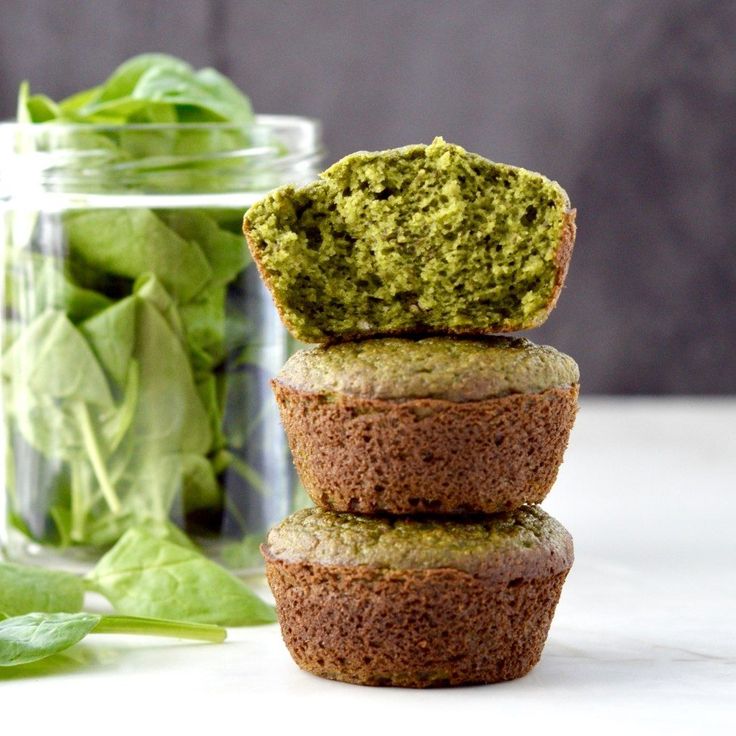 Sensitivities or intolerances are hard to identify and usually present themselves in slightly different ways. For gluten intolerance look for these symptoms:
Sensitivities or intolerances are hard to identify and usually present themselves in slightly different ways. For gluten intolerance look for these symptoms:
- Rashes (hives/eczema)
- Bloating or constipation
- Diarrhea
With gluten sensitivity look for these signs:
- Vomiting
- Diarrhea
- Upset Stomach
When examining both lists, you can clearly see an overlap in the symptoms. And since your baby is unable to speak, it’s hard to ask where exactly the pain is. As an intolerance is a more serious issue, completely avoiding gluten in your baby’s first year is important.
If the baby only has a sensitivity to the gluten or wheat, limited quantities may be acceptable for your baby to consume. This is baby dependent, as the level of intolerance can vary between each baby. Remember to speak with your pediatrician to determine the level of gluten sensitivity your baby may have and create the best plan to help feed your growing baby.
Here is a helpful chart to refer back to for signs of gluten intolerance or celiac disease:
European Baby Formula
The perfect nutrition for your baby starts with ingredients that you trust to be safe, pure, and allergen free.
You can rest assured that My Organic Company only carries European baby formulas that are guaranteed to be gluten free, clean, complete nutrition your family can count on.
Special Nutrition, Special babies
For all your baby's special nutritional needs, for baby questions that pop up everyday and everything in between, My Organic Company is here for you.
We have created a community just for you. Share your experiences with others, ask questions or look for a quick smile in the HiPP, Holle Kendamil & European Baby Formula Parent Community.
Read Next:
A Guide to the Gluten-Free Diet for Kids
If your child has been diagnosed with celiac disease or non-celiac gluten sensitivity, they’ll need to follow a strict gluten-free diet. Always talk to a doctor before cutting gluten out of your child’s diet.
Always talk to a doctor before cutting gluten out of your child’s diet.
Gluten is a protein found in wheat, barley, rye and the derivatives of these grains, including malt and brewer’s yeast.
A gluten-free diet excludes all products containing these ingredients. Those who are gluten-free can still enjoy a healthy diet filled with fruits, vegetables, meats, poultry, fish, beans, legumes and most dairy products. Such ingredients are naturally gluten-free, and safe for individuals who do not have allergies to these respective food groups.
Eating gluten-free is the only way kids with celiac disease can stay healthy. There’s no medicine or shot you can take to make it go away.
By sticking to gluten-free food, kids with celiac disease will start to absorb the vitamins and minerals needed to grow. Lots of gluten-free kids feel stronger and have more energy after being on the diet.
Downloadable Gluten-Free Diet Resources:
- The Gluten-Free Diet Overview
- The Beyond Celiac Getting Started Guide, a comprehensive guide to living with celiac disease
Gluten-Free Foods & Alternatives
Luckily, there are lots of delicious foods that are naturally gluten-free! Fresh fruits and vegetables are gluten-free, and so are most meats like chicken and fish. A lot of ice cream is gluten-free, too!
A lot of ice cream is gluten-free, too!
There are also gluten-free versions of your kid’s favorite foods, like gluten-free bread, cereals, pancakes, chicken nuggets and even pizza crust. Just make sure you look for a gluten-free label on the packaging.
Additionally, there are many grain, flour and starch alternatives that naturallydo not contain gluten and thus can be consumed by children on a gluten-free diet.
Gluten-Free Grains and Flour-Alternatives Include:
- Amaranth
- Brown, white and wild rice
- Buckwheat
- Almond meal flour
- Coconut flour
- Corn
- Cornstarch
- Guar gum
- Millet
- Pea flour
- Potato flour
- Potatoes
- Quinoa
- Sorghum
- Soy flour
- Teff
However, all grains are considered “high risk” for cross-contact because they are often grown, milled and manufactured near gluten-containing grains. “ Cross-contact” occurs when a gluten-containing food touches a gluten-free food. Eating even tiny amounts of gluten like this can cause damage to the small intestine and prevent nutrients from being absorbed into the bloodstream. Whenever possible, purchase naturally gluten-free grains, flours and starches that are labeled gluten-free and, also, certified gluten-free by a third party.
“ Cross-contact” occurs when a gluten-containing food touches a gluten-free food. Eating even tiny amounts of gluten like this can cause damage to the small intestine and prevent nutrients from being absorbed into the bloodstream. Whenever possible, purchase naturally gluten-free grains, flours and starches that are labeled gluten-free and, also, certified gluten-free by a third party.
Gluten-Free Eating for Kids Throughout the Years
Infants
Breastfeeding
If you’re a mother who has been diagnosed celiac disease, you must still maintain a gluten-free diet while breastfeeding.
Formula
If your infant has been diagnosed with celiac disease and you are formula-feeding, make sure to check with the manufacturer to see if the formula is gluten-free before feeding it to your child.
Toddlers
When feeding a gluten-free toddler, it’s important to consult with your child’s doctor and a nutritionist that specializes in the gluten-free diet.
10 Gluten-Free Toddler Snack Ideas:
- “Mushy” fruits and vegetables – avocados, bananas, kiwi, pears cooked potatoes/sweet potatoes. Smash or chop into tiny pieces and let your little one enjoy!
- Cream of rice – just make sure it’s labeled gluten-free to avoid cross-contaminated grains.
- Applesauce
- Scrambled eggs
- Gluten-free macaroni and cheese
- Gluten-free mini pancakes (try this recipe for gluten-free eggless nog pancakes!)
- Gluten-free muffins/zucchini muffins/pumpkin muffins (try this recipe for mini chocolate chip muffins with kale!)
- Hummus
- Cucumber “sticks”
- Gluten-free toddler pouches
Just remember, for toddlers, it’s important to avoid foods that pose a choking hazard, such as uncut grapes or hot dogs.
- Learn about these and more gluten-free toddler food options on our Feeding a Gluten-Free Toddler page.
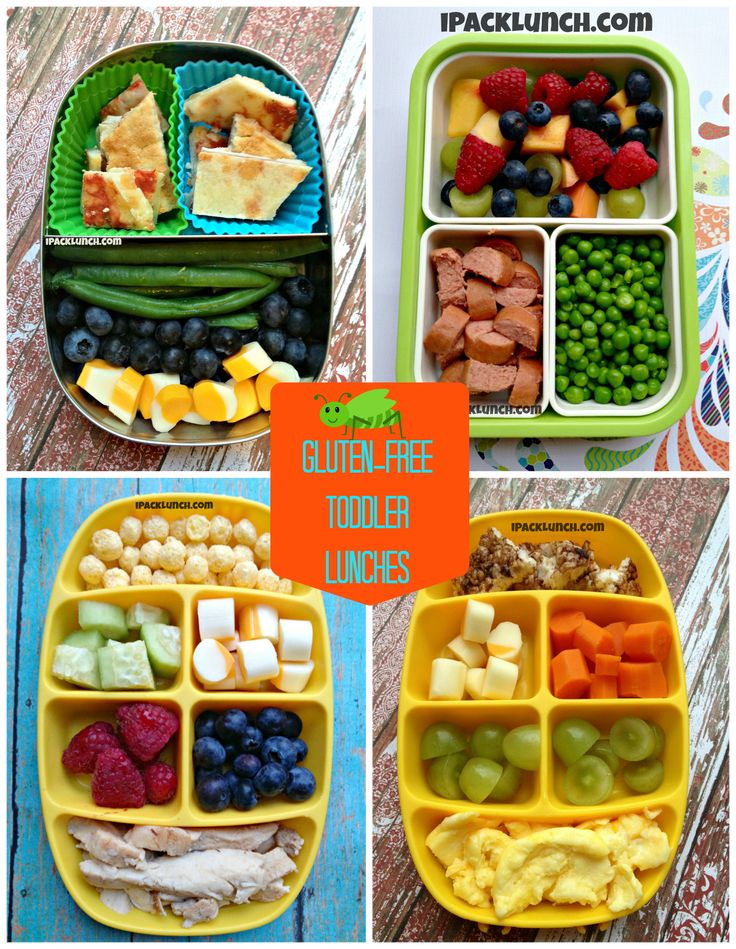
School-Aged Children
The gluten-free diet is confusing for anyone of any age. So it’s tempting to spare your child the details. Instead, you choose their food. You talk to their teachers. You grill the server. While the precautions are both necessary and reassuring, keeping your child on a “need-to-know” basis won’t help in the long run.From grocery games to toy food parties and tending the garden, nurture your child’s gluten-free awareness from a young age to keep them involved and help them become an advocate for themselves.
- Learn more about educating your young children about eating gluten-free in this article by our CEO, Alice Bast.
Packing a Gluten-Free Lunch
Many parents opt to pack a lunch for their child instead of the school cafeteria. This can help to alleviate many concerns surrounding ingredients and preparation practices of the cafeteria. Most parents say they get stuck in a rut when packing lunches – gluten-free or not. Use these tips to keep your child’s lunch both gluten-free and delicious.
Most parents say they get stuck in a rut when packing lunches – gluten-free or not. Use these tips to keep your child’s lunch both gluten-free and delicious.
Gluten-Free Lunch Packing Tips:
- Spend two weeks experimenting with new products and recipes. Have three envelopes in the kitchen for your child to cut out labels and distribute in envelopes labeled “like it,” “love it,” “hate it.” Don’t forget to experiment with raw fruits and veggies, too.
- Get creative with spreads, dips, jams, etc. Just keep them contained in something that is truly airtight (for extra protection, store in plastic bag). Make sure they are labeled gluten-free on the package when you purchase.
- If you have a picky eater or a child who needs to gain weight after their diagnosis, nutritional shakes, power bars and calorie powders can pack a punch. Make sure they are labeled gluten-free. Consult with a registered dietitian to help with your meal plan.

- When you find a winning combo, send enough with your child to share. That will show your child’s peers that gluten-free food is not “weird” and your child will have the opportunity to feel part of the group.However, other children may like to share or trade lunches, too. Be sure to talk to your child about the risk trading food could pose to their health.
25 Gluten-Free Snack Ideas for Kids:
- Corn tortilla chips and salsa or guacamole
- Gluten-free baked corn dogs
- Gluten-free pretzels
- Ants on a log (celery sticks with peanut butter and raisins)
- Cucumbers cut into fun shapes with hummus
- Avocados mashed on gluten-free toast
- Berry yogurt parfaits
- Brownie bottom pumpkin bars
- Cheddar, bacon and chive topped gluten-free crackers (we love Crunchmaster crackers!)
- Fruit popsicles
- Kale chips
- Kale muffins
- Gluten-free quesadillas (gluten-free tortillas with cheese and veggies)
- Popcorn
- Apples with peanut butter
- Rice cakes
- Applesauce
- Gluten-free crackers with cheese
- Frozen grapes
- Potato chips and gluten-free dip
- Fruit salad
- Candy corn mini muffins
- Butternut squash pizza slices
- Peanut butter and bananas on gluten-free crackers
- Gluten-free lunchmeat wrapped in a gluten-free tortilla with cheese, mayo and lettuce
Developing a 504 Plan
In certain situations, your child may be protected under the Rehabilitation Act of 1973.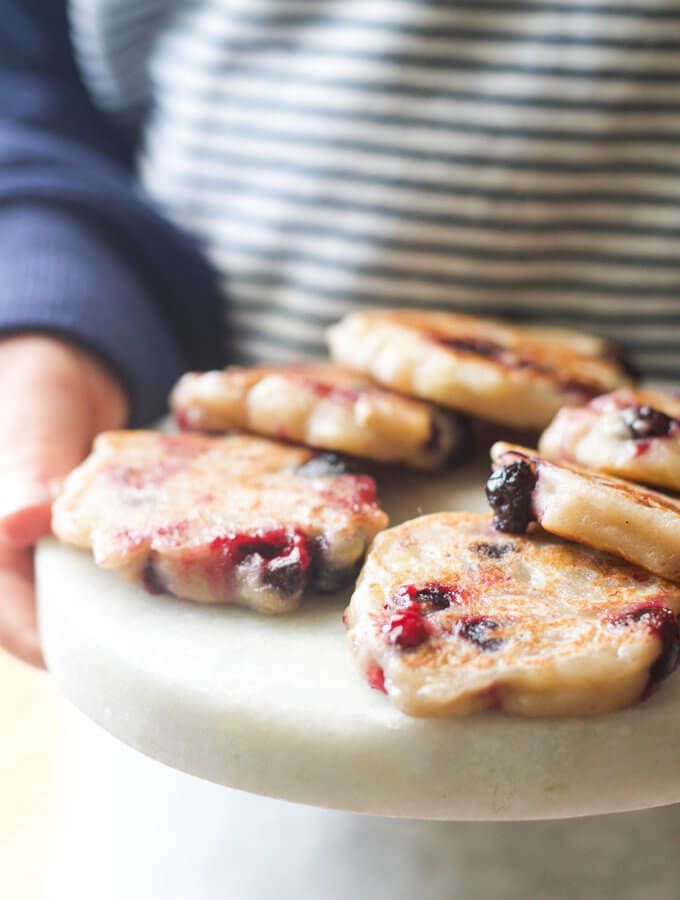 This act applies to all institutions receiving federal financial assistance, such as public schools. Under this law, public schoolsmust provide a free, appropriate public education and not discriminate against disabled students.
This act applies to all institutions receiving federal financial assistance, such as public schools. Under this law, public schoolsmust provide a free, appropriate public education and not discriminate against disabled students.
You can work with your child’s school to develop a 504 Plan, which stems from Section 504 of the Rehabilitation Act of 1973. This section prevents discrimination against public school students in grades K through 12 because of disabilities. A 504 plan is meant to “remove barriers” to learning by providing a specific outline on how to make accommodations or modifications on a student-by-student basis.This could translate into the school providing a safe environment for your child’s health.
Siblings
When the focus turns to one child’s celiac diagnosis, brothers and sisters can suffer feelings of neglect.
- Learn about dealing with sibling blues and celiac disease in this article by our CEO Alice Bast.
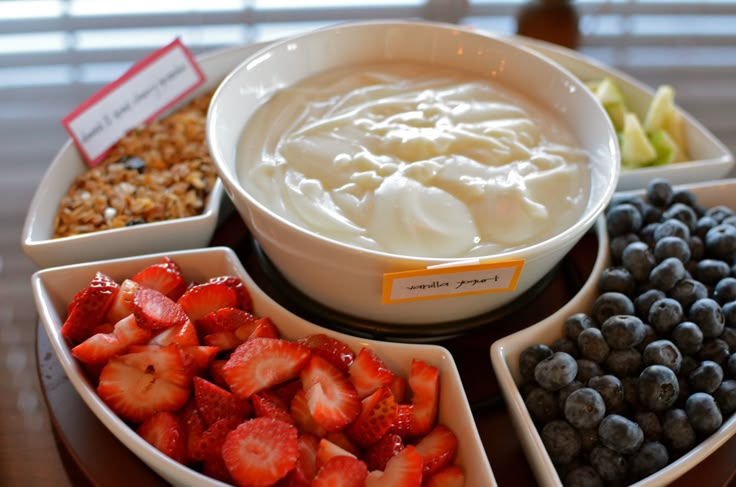
Gluten-Free Kids Recipes
The links below go to lists of gluten-free and kid-friendly recipes. The gluten-free recipes are divided up into breakfast, lunch, dinner and dessert/snacks. Parents, you’ll find gluten-free lunch ideas for the kids, plus inspiration for every meal. You can team up in the kitchen to help your child learn basic cooking skills, as well as help them identify gluten-containing ingredients and understand how to avoid cross-contact.
-
Gluten-Free Breakfast Recipes for Kids
-
Gluten-Free Lunch Recipes for Kids
-
Gluten-Free Dinner Recipes for Kids
-
Gluten-Free Snacks and Dessert Recipes for Kids
College can be a frustrating experience for students who need to follow a gluten-free diet. Living on campus means you have limited access to food. Gluten-free options aren’t always available, and the dining hall staff may not know the best ways to keep students with celiac disease and non-celiac gluten sensitivity (‘gluten sensitivity’) safe.
Gluten-free options aren’t always available, and the dining hall staff may not know the best ways to keep students with celiac disease and non-celiac gluten sensitivity (‘gluten sensitivity’) safe.
Going to college gluten-free is getting easier, but having the right tools, advice and inspiration can make a big difference.
In some cases, students with celiac disease can be protected under the Americans with Disabilities Act (ADA). In December 2012, a lawsuit filed against Lesley University set a precedent for college students living with celiac disease. Essentially, gluten-free students were being denied accommodations for their special diets and were unable to opt out of the mandatory meal plan. The case was sent to the US Department of Justice, who ruled that Lesley University must make reasonable accommodations for students. While this case is not a law that all colleges and universities must follow, it provides great guidelines for other schools to follow. Among other things, here’s what the Lesley University settlement agreement required:
Among other things, here’s what the Lesley University settlement agreement required:
- Provide gluten-free and allergen-free food options in its dining hall food lines in addition to its standard meal options
- Allow students with known allergies to pre-order allergen-free meals
- Display notices concerning food allergies and identify foods containing specific allergens
- Train food service and university staff about food allergy-related issues
- Provide a dedicated space in its main dining hall to store and prepare gluten-free and allergen-free foods
- Work to retain vendors that accept students’ prepaid meal cards that also offer food without allergens.
These agreements can serve as suggestions when you speak to a foodservice director or other authority on your campus.
- Learn more in the Gluten-Free in College section of our website.
Advice on Raising a Gluten-Free Child, From a Parent Who Has Been There
By Amy Ratner
Children with celiac disease can grow up normally and be happy and healthy. It takes pre-planning, either by verifying safe food will be available when they go to someone’s house, a school activity, a party or some other event or by preparing food that they can take. There are many examples of children who’ve never let the diet stand in their way from preschool through college.
It takes pre-planning, either by verifying safe food will be available when they go to someone’s house, a school activity, a party or some other event or by preparing food that they can take. There are many examples of children who’ve never let the diet stand in their way from preschool through college.
The best thing a parent can do for a child with celiac disease is convey the message that the gluten-free diet does not have to limit them in any way. Being positive is extremely important. Kids with celiac disease often have a great attitude and deal very well with the fact that there are times when they can’t have some foods the other kids are having. Usually, that attitude is fostered by their parents who make sure preparations have been made so their child does not feel deprived. Food is often less of a big deal to kids with celiac disease than their parents.
Some new research is showing that kids who are diagnosed very young and don’t have symptoms are the least likely as young adults to get important follow-up healthcare, including blood tests that show when gluten is triggering antibodies. Since these kids have the benefit of being diagnosed at a point where less damage has been done by unknown celiac disease and a good chance at recovery, it’s a shame for them to lose ground by neglecting follow-up. A recent study found that children were more likely to get follow-up care as adults if they: are introduced at around 16 years old to the idea that they will eventually need an adult gastroenterologist; have a pediatric gastroenterologist who initiates a plan for a transfer to an adult gastroenterologist; and complete the transfer of care by 18 years old.
Since these kids have the benefit of being diagnosed at a point where less damage has been done by unknown celiac disease and a good chance at recovery, it’s a shame for them to lose ground by neglecting follow-up. A recent study found that children were more likely to get follow-up care as adults if they: are introduced at around 16 years old to the idea that they will eventually need an adult gastroenterologist; have a pediatric gastroenterologist who initiates a plan for a transfer to an adult gastroenterologist; and complete the transfer of care by 18 years old.
When she was diagnosed with celiac disease at two years old, I worried that my daughter would not be able to grow up happy and healthy. But she’s now 27, and she went through everything from preschool to college in a perfectly normal way. We decided early on that the diet should not stop her from doing anything she wanted, and that’s how she has lived her life. She participated in activities ranging from Girl Scouts to dance team, went to college far from home and studied abroad in London. Now she’s all grown up and getting married.
Now she’s all grown up and getting married.
If your child is newly diagnosed, I have been where you are, and I know how you feel. So, I hope it helps to know that your child will be OK, too.
mixtures, cereals, purees, pasta for children gluten-free
Celiac disease (gluten intolerance) is usually detected in the first year of life. And mothers of such babies have to select products for their children especially carefully.
It is better to buy products for a child with gluten intolerance in an offline store in order to see the cherished inscription with your own eyes. But now many online stores post photos from boxes from all angles online, which is a definite plus when choosing food for a child. You should not choose by headings and filters on websites - unfortunately, not all online stores and even pharmacies fully configure this tool. It is better to pay attention to the names of goods and photos from the packages. If there are no signs on them, then it is better to avoid wasting money.
As a general rule, gluten-free baby products are labeled/boxed as crossed spikelet icon, "Gluten Free", "Gluten Free", "Senza glutine".
You can also conditionally focus on products that initially should not contain gluten in their basis - corn, soy, rice, buckwheat. Look for hypoallergenic products. Often, gluten is absent from specialized dairy-free products, as some children suffer from mixed forms of allergies. In any case, you need make sure that the label stating that the product is gluten-free is on the packaging. Also, you can additionally consult with the manager from the store.
We can only give examples of gluten-free products for children.
GLUTEN-FREE INFANT FORMULA
Similac Alimentum lactose and gluten free from birth, 400 g
Calories: 67.6 kcal per 100 grams of ready mix
BJU: 1.86/3.75/6.62 per 100 grams
Composition: maltodextrin, VEGETABLE OILS (high oleic safflower oil, medium chain triglyceride (MCT) oil, soybean oil), casein hydrolysate, sucrose, MINERALS (calcium citrate, potassium citrate, calcium phosphate, magnesium chloride, sodium chloride, potassium phosphate , iron sulfate, potassium chloride, zinc sulfate, copper sulfate, potassium iodide, sodium selenite), emulsifier modified corn starch, thickener xanthan gum, VITAMINS (ascorbic acid, choline chloride, inositol, ascorbyl palmitate, vitamin E, niacinamide, calcium pantothenate, vitamin A palmitate, riboflavin, thiamine hydrochloride, pyridoxine hydrochloride, folic acid, vitamin K1 (phylloquinone), biotin, vitamin D3 (cholecalciferol), cyanocobalamin), L-tyrosine, arachidonic acid (ARA) from M. alpina oil, L-cystine , docosahexaenoic acid (DHA) from C. cohnii oil, L-tryptophan, taurine, mixed tocopherols antioxidant, L-carnitine.
alpina oil, L-cystine , docosahexaenoic acid (DHA) from C. cohnii oil, L-tryptophan, taurine, mixed tocopherols antioxidant, L-carnitine.
Manufacturer: Abbott Nutrition, USA
Contraindications: Individual intolerance to ingredients
Humana SL, 500 grams from 0 to 1 year (soy) gluten free
Calories: 67 kcal per 100 ready mix
BJU: 1.7/3.3/7.8 grams
Base: soy protein isolate
Composition: Soy protein isolate, glucose syrup, mixture of vegetable oils: palm, low-erucic rapeseed and sunflower; calcium salts of phosphoric acid, emulsifier: soy lecithin, calcium carbonate, potassium chloride, potassium citrate, sodium citrate, magnesium carbonate, vitamin C, niacin, pantothenic acid, vitamin E, riboflavin, thiamine, vitamin A, vitamin B6, folic acid, vitamin K1, biotin, vitamin D3, vitamin B12, L-cysteine, choline hydrogen tartrate, sodium chloride, L-tryptophan, taurine, inositol, iron lactate, L-carnitine, zinc oxide, copper sulfate, potassium iodate, manganese sulfate, sodium molybdate.
Manufacturer : Humana GmbH
Country of origin: Germany
Nutricia Neocate LCP Gluten Free
The mixture is in principle free of whole proteins of any nature.
Calories: 67 kcal per 100 grams of pre-mixed formula
BJU: 1.8 / 3.5 / 7.1 grams (instead of protein - protein equivalent)
Base: Amino acids
Composition: dry glucose syrup, refined vegetable oils (non-hydrogenated coconut, high oleic sunflower, sunflower, rapeseed oils), L-arginine L-aspartate, L-leucine, L-lysine acetate, L-glutamine, L-proline, emulsifier (E472c), L- valine, glycine, L-isoleucine, dipotassium hydrogen phosphate, L-threonine, L-phenylalanine, L-tyrosine, L-serine, L-histidine, L-alanine, dibasic calcium phosphate, sodium chloride, tripotassium citrate, L-cystine, L- tryptophan, calcium carbonate, tricalcium citrate, magnesium chloride, choline bitartrate, calcium glycerophosphate, L-methionine, tribasic calcium phosphate, unicellular arachidonic acid high oil, magnesium L-aspartate, unicellular docosahexaenoic acid high oil, M-inositol, L-ascorbic acid, taurine, iron sulfate, zinc sulfate, L-carnitine, uridine 5-monophosphate disodium salt, cytidine 5-monophosphate, nicotinamide, inosine 5-monophosphate disodium salt, adenosine 5-monophosphate, calcium D-pantothenate , guanosine 5-monophosphate disodium salt, antioxidants (E304, E306, E307), DL-α-tocopherol acetate, copper sulfate, thiamine hydrochloride, pyridoxine hydrochloride, riboflavin, manganese sulfate, vitamin A acetate, potassium iodide, folic acid, chromium chloride, Vitamin K1, sodium selenite, sodium molybdate, D-biotin, Vitamin D3, cyanocobalamin.
Manufacturer: Nutricia
Country of manufacture: Netherlands
GLUTEN-FREE CHILDREN'S PORRIES
When choosing cereals, you should be especially careful, since this particular product can be contaminated with gluten due to the nature of production. Even if gluten-containing components were not originally included in the composition, this does not mean that they did not get there. Be sure to pay attention to the labels on the packages.
Mamako milk porridge with goat milk from 5 months old, 200 g
Calories: 418 kcal per 100 grams of dry product
BJU: 14/10.4/67.2 grams
Manufacturer: Mamako
Country: Serbia and Montenegro
Ingredients: corn grits, goat milk (32%), prebiotic fibers, mineral complex (calcium carbonate, iron pyrophosphate, potassium iodide, zinc sulfate), vitamin complex (A, D, E, K, C, B1, B2 , B6, B12, niacin, folic acid, pantothenic acid, biotin).
Pros: 13 vitamins, 7 minerals, sugar free, gluten free
Dairy-free porridge Fleur Alpine Organic buckwheat hypoallergenic from 4 months, 175 g
Calories: 388 kcal per 100 grams of dry product
BJU: 12.7/3.1/75.4 grams
Manufacturer: Topfer GmbH
Country: Germany
Ingredients: whole grain buckwheat flour
Pros: organic
Available in AUCHAN
Milk-free porridge Baby buckwheat 200 g from 4 months low allergenic
Calories: 378 kcal per dry product
BJU: 12.4/3.2/77 grams per dry product
Manufacturer: Nutricia
Country: Russia
Ingredients: buckwheat flour, maltodextrin, vitamin and mineral premix (contains minerals (Ca, Fe, Zn, Cu, I), vitamins (C, E, niacin, A, D3, K, pantothenic acid, B12, B1, biotin, B6, folic acid, B2)), Ca (calcium carbonate).
Pros: Sugar and salt free
GLUTEN-FREE CHILD PASTA
Children's gluten-free pasta is made with gluten-free ingredients. Usually as a basis - corn flour, rice flour, their mixture, amaranth flour, there may be variations based on legumes - from chickpeas, peas, lentils. You can also check out our roundup of gluten-free pasta brands.
Pasta MAKFA ANIMALS rice and corn, 300 g gluten free
Calories: 366 grams
BJU: 6.7/1.8/79 grams
Composition: Corn flour, rice flour, emulsifier (fatty acid mono- and diglycerides)
Manufacturer: COMERCIAL GALLO, SAU
Country: Spain
Available in AUCHAN
Penne rice pasta with beets and carrots, gluten free Ms. Odri
Calories: 355 kcal
BJU: 5.81/0.64/81.5 grams
Ingredients: Rice flour, dried carrots, dried beetroot, tapioca starch, natural anthocyanin dye, beetroot.
Manufacturer: Ms. Odri
Country: Vietnam
CHILDREN'S GLUTEN-FREE COOKIES
Baby biscuits gluten-free from 6 months, Bebi Premium, instant
Calories: 440 kcal
BJU: 5/12.1/77.5
Composition: Baby corn flour 42.01%, sugar 19.09%, potato starch, vegetable oil, skimmed milk powder, milk protein, fructose syrup, emulsifier - soy lecithin, minerals (calcium carbonate, iron lactate, zinc sulfate), raising agents, iodized salt, emulsifier - lecithin, vitamins (vitamin B1 - thiamine mononitrate, riboflavin, nicotinamide, calcium pantothenate, pyridoxine hydrochloride), natural flavor - vanillin.
Manufacturer: Bebi Premium
Country: Italy
Plus: also nut free, suitable for allergy sufferers
GLUTEN FREE BABY PUREE
Pay attention to the Hame brand, they clearly state "Gluten Free" on the front of the package
Hame Puree Beef with liver from 8 months.
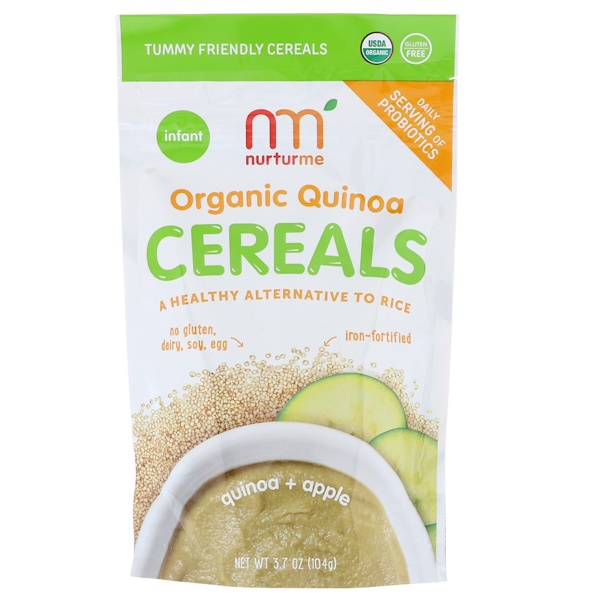 100 g gluten free
100 g gluten free Calories: 122 kcal
BJU: 9.3/7.8/3.5 grams
Composition: Drinking water, beef, trimmed pork liver, rice flour, refined deodorized sunflower oil.
Manufacturer: Hame
Country: Russia
Hame Puree Chicken with beef from 6 months. 100 g gluten-free
Calories: 118 kcal
BJU: 9/7.5/3.5 grams
Composition: Drinking water, chicken meat, beef meat, rice flour, refined deodorized sunflower oil.
Manufacturer: Hame
Country: Russia
See also hypoallergenic formulas for children.
Gluten in baby food - what you need to know about it
- Anastasia Anatolyevna, please tell us what gluten is in products.
— Gluten, or, in other words, gluten, is a vegetable protein found in the hard shell of certain cereals — wheat, rye, and barley.
— Is it true that gluten is in absolutely any food for children?
— No, not all baby foods contain gluten. It is absent in one-component gluten-free cereals (buckwheat, rice, corn), in fruit and vegetable one-component purees, baby cottage cheese, baby kefir, whole fish and meat. There are manufacturers of milk formulas up to a year old who do not add gluten to them - MAMAKO is also on their list.
In general, gluten-free baby food is produced by domestic and foreign manufacturers, including MAMAKO ® .
— Manufacturers add gluten to a variety of infant foods. Gluten for children under one year old - is it still more good or harm for babies?
- Some baby food manufacturers do include gluten in their formulas and cereals for babies' first foods. This is done to improve the organoleptic qualities and nutritional properties of the product.
- How can parents find their special gluten-free baby product, such as gluten-free baby cereal?
- Whether gluten is present in the product or not, the manufacturer indicates on the packaging. As a rule, trading companies label their products - some try to place a bright identification mark, a crossed-out ear of wheat (it means that the product does not contain gluten), others make the inscription "Gluten-Free" - so that mom can determine the presence of gluten in any product, in including in porridge and goat milk mixtures. However, information is not always placed on the front side of the package, and the box will have to be twisted to see the sign or the desired phrase in the description of the product composition.
As a rule, trading companies label their products - some try to place a bright identification mark, a crossed-out ear of wheat (it means that the product does not contain gluten), others make the inscription "Gluten-Free" - so that mom can determine the presence of gluten in any product, in including in porridge and goat milk mixtures. However, information is not always placed on the front side of the package, and the box will have to be twisted to see the sign or the desired phrase in the description of the product composition.
— Please tell us when gluten causes digestive problems in a child.
- There are several theories of the origin of pathologies that are associated with the intake of gluten in the child's body. Mild cases of illness can be caused by a deficiency of an enzyme to digest gluten. Serious manifestations - true gluten intolerance (the disease is called "celiac disease") - is the total absence of such an enzyme.
On the other hand, a pathological condition may develop as the child's nutrition expands and, accordingly, the antigenic load on his immune system increases.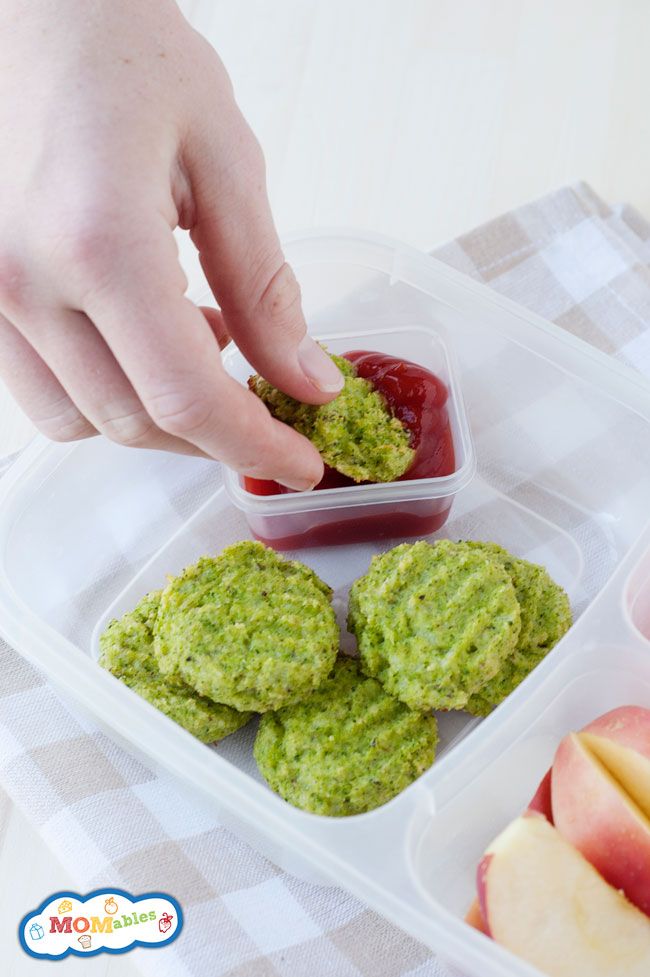 When gluten enters the child's body, special immune complexes are formed (gluten plus antibodies). The immune system produces antibodies in response to the penetration of a foreign protein. Such an immune complex damages the intestinal walls, which leads to diarrhea and starts the whole chain of unpleasant symptoms in the future.
When gluten enters the child's body, special immune complexes are formed (gluten plus antibodies). The immune system produces antibodies in response to the penetration of a foreign protein. Such an immune complex damages the intestinal walls, which leads to diarrhea and starts the whole chain of unpleasant symptoms in the future.
— Anastasia Anatolyevna, can gluten intolerance be formed due to the fact that gluten-containing foods get into the baby’s diet too early?
— The early use of gluten-containing products in large quantities, of course, can provoke dyspepsia in children. But true celiac disease is a genetically determined disease. This means that a genetic defect in which the enzymes for digesting gluten are not synthesized in the intestines is inherited by children from their parents. Celiac disease, in which the necessary enzymes for the digestion of gluten in the body are completely absent, occurs in about 1% of the population. All other gluten-dependent diseases do not have a classical name and may occur in children to a greater or lesser extent.
— They write different things about gluten: either it is harmless for young children, or, according to pediatricians, it is banned for up to 6 months. Where does this conflicting information come from?
- The younger the child, the more likely that the immature gut will react negatively to these proteins due to immaturity of enzymes or their deficiency - as a result, gluten can cause allergies. In addition, experts cannot foresee whether a child has a predisposition to develop celiac disease, so you should not risk your baby's health. Among children under one year of age, those who got acquainted with gluten products later than their peers have fewer problems.
Is a gluten-free diet only for children with gluten intolerance, or is it better for healthy babies to follow it too?
- In my opinion, gluten in the diet should appear no earlier than 6-8 months. It is impossible to predict how a child's immature gut, immature enzymatic system, will behave in response to the introduction of gluten.
After 6-8 months, gluten gradually appears in the baby's diet. But complementary foods should start with gluten-free cereals. For example, MAMAKO 9 gluten-free cereals are suitable for the first feeding0376 ® (buckwheat, rice, corn in goat's milk). Also for gluten-free complementary foods, there are fruit purees with goat curd. After the child adapts to this type of complementary foods, other types of cereals are introduced, but also gradually, in order to track individual intolerance.
Gluten (gluten) in baby food should appear no earlier than 6-8 months. If gluten enters the diet of a young infant, complaints of intestinal upset and food allergies may occur. Moreover, the more gradually new products are introduced, the calmer the immune response to food diversity will be.
* Breast milk is the best food for babies. WHO recommends exclusive breastfeeding for the first 6 months of a child's life and continued breastfeeding after complementary foods are introduced until the age of 2 years.





